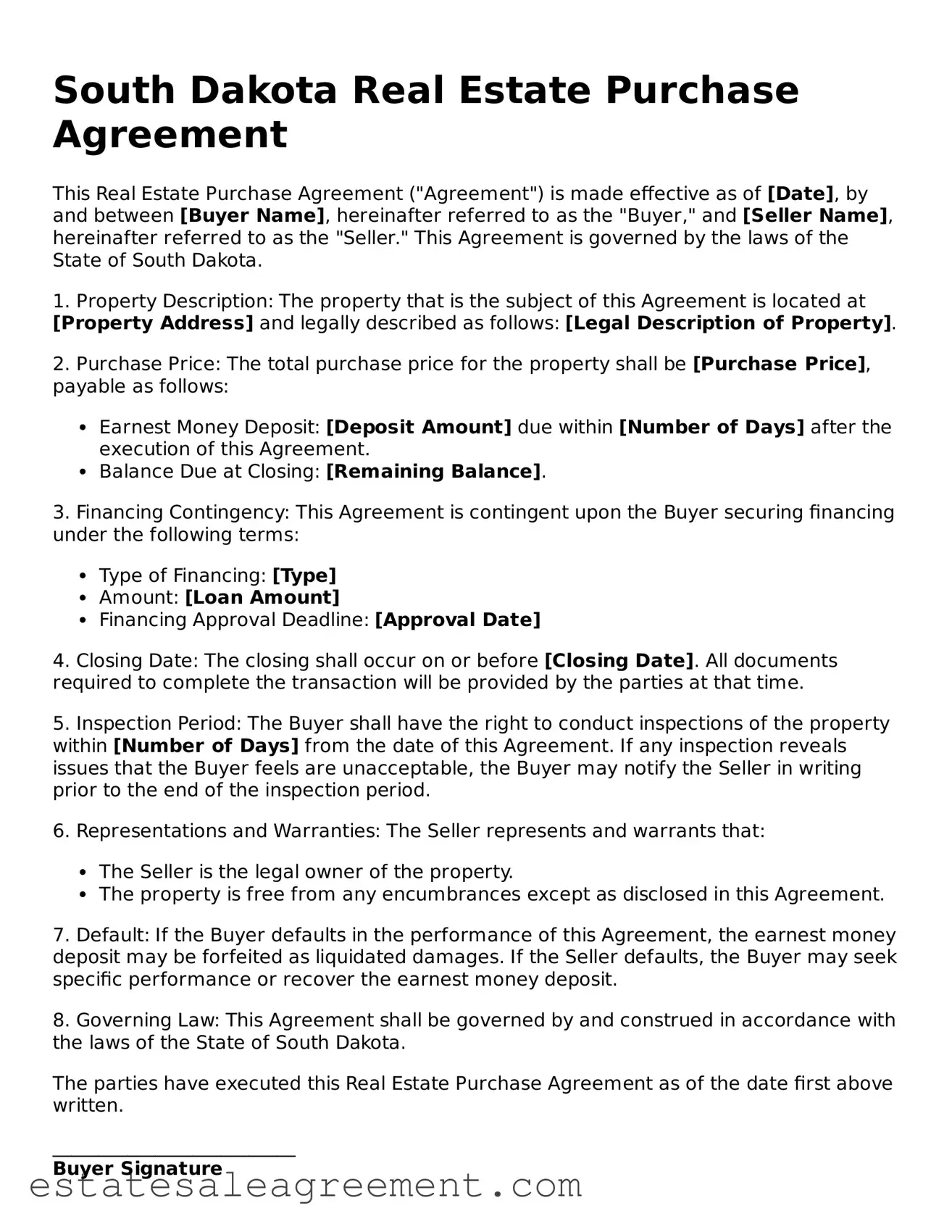South Dakota Real Estate Purchase Agreement
This Real Estate Purchase Agreement ("Agreement") is made effective as of [Date], by and between [Buyer Name], hereinafter referred to as the "Buyer," and [Seller Name], hereinafter referred to as the "Seller." This Agreement is governed by the laws of the State of South Dakota.
1. Property Description: The property that is the subject of this Agreement is located at [Property Address] and legally described as follows: [Legal Description of Property].
2. Purchase Price: The total purchase price for the property shall be [Purchase Price], payable as follows:
- Earnest Money Deposit: [Deposit Amount] due within [Number of Days] after the execution of this Agreement.
- Balance Due at Closing: [Remaining Balance].
3. Financing Contingency: This Agreement is contingent upon the Buyer securing financing under the following terms:
- Type of Financing: [Type]
- Amount: [Loan Amount]
- Financing Approval Deadline: [Approval Date]
4. Closing Date: The closing shall occur on or before [Closing Date]. All documents required to complete the transaction will be provided by the parties at that time.
5. Inspection Period: The Buyer shall have the right to conduct inspections of the property within [Number of Days] from the date of this Agreement. If any inspection reveals issues that the Buyer feels are unacceptable, the Buyer may notify the Seller in writing prior to the end of the inspection period.
6. Representations and Warranties: The Seller represents and warrants that:
- The Seller is the legal owner of the property.
- The property is free from any encumbrances except as disclosed in this Agreement.
7. Default: If the Buyer defaults in the performance of this Agreement, the earnest money deposit may be forfeited as liquidated damages. If the Seller defaults, the Buyer may seek specific performance or recover the earnest money deposit.
8. Governing Law: This Agreement shall be governed by and construed in accordance with the laws of the State of South Dakota.
The parties have executed this Real Estate Purchase Agreement as of the date first above written.
__________________________
Buyer Signature
[Buyer Name]
__________________________
Seller Signature
[Seller Name]
